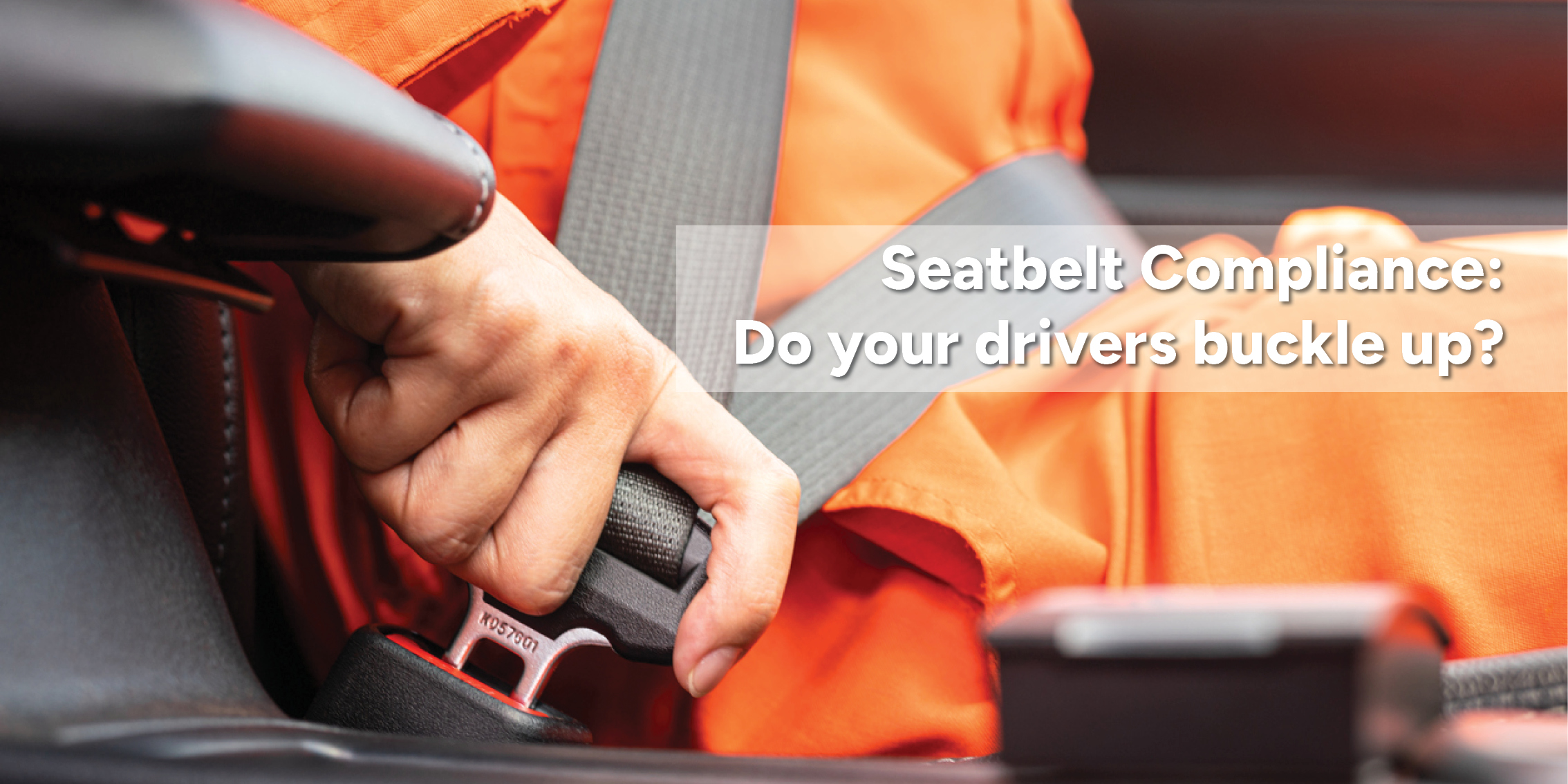Worrying trend in seatbelt compliance
Are you confident your drivers buckle up on every trip? The latest statistics from the Department for Transport (DfT) and a study by road safety charity Brake suggest more needs to be done to boost compliance.
Seatbelt wearing for drivers and front passengers became a legal requirement more than 40 years ago and the safety benefits are widely recognised, yet the latest DfT data shows that some people still don’t comply.
Almost a quarter (24%) of car drivers and passengers killed on Britain’s roads in the past five years were not wearing a seatbelt, according to the Reported road casualties Great Britain, annual report: 2022.
The research shows that fleet managers need to be particularly concerned about men and young drivers (aged 17 to 29). Over the past five years, on average, 30% of men who died on Britain’s roads weren’t wearing a seatbelt compared with 14% of women, and 34% of young people weren’t, compared with 11% of those aged 60 or over.
There is also a big difference between daytime (8am to 6pm) and evening (6pm to 8am); 41% of car occupants who were killed in the evening weren’t wearing a seatbelt compared with 16% in the daytime, on average, between 2018 and 2022. Looking at 2022 alone, this figure rose to 42% versus 11%.
Road safety charity Brake, which Reflex has been a long-time supporter of, believes it’s reasonable to estimate that almost 3,000 of the 28,941 people seriously injured on roads in Britain in 2022 may not have been wearing a seatbelt, and just over 3,000 of the 112,619 who were slightly injured may not have been wearing a seatbelt.
That’s approximately 6,000 people in one year who may have been able to protect themselves against traumatic brain injuries, neck and spinal injury, and damage to internal organs, Brake says.
Passengers less likely than drivers to wear a seatbelt
Research which Brake and insurer AXA UK commissioned in 2024 among 2,016 car drivers found that even though the vast majority of people say they always wear a seatbelt, in practice this might not always be the case.
They found seatbelt usage was lower when travelling as a passenger, with only 90% of respondents saying they always wear one.
The research mirrored the DfT data with men less likely to comply with seatbelt wearing than women (94% said they always wear a seatbelt when driving compared with 98% of women and 88% of men said they always wear a seatbelt when a passenger, compared with 98% of women).
Some of the most common reasons survey respondents gave for not wearing a seatbelt were that ‘there wasn’t one’ or ‘it was broken’, they ‘forgot to wear it’ or because they find wearing one ‘uncomfortable’, ‘restrictive’ or ‘annoying’.
The research also found a lack of knowledge about the law regarding seatbelts and when exemptions apply. Failure to wear a seatbelt could result in an on-the-spot fine of £100. If prosecuted, a driver could be fined up to £500.
Drivers in London least likely to wear a seatbelt
Brake and AXA’s research repeatedly shows lower seatbelt compliance from drivers and passengers in London compared with other regions in the UK.
Only 85% of drivers in London said they always wear a seatbelt when driving, compared with more than 93% of drivers in all other regions of the UK, and only 69% always wear aseatbelt when a passenger, compared with more than 87% in all other regions.
Drivers in London are less likely to always wear a seatbelt for short journeys, both when driving (86%) and as a passenger (79%).
As for driving without any passengers, 82% of London drivers said they always wear a seatbelt in that instance, compared with 94% overall.
London drivers may be less likely to value the safety benefits of wearing a seatbelt as only 50% of them said they wear a seatbelt to protect other people in a crash, compared with more than 68% in all other regions.
When asked about why they might choose not to wear a seatbelt, 10% of London drivers said they ‘don’t need to’.
How can fleet operators ensure seatbelt compliance?
At Reflex Vehicle Hire we have found that artificial intelligence (AI)-powered technology and education can boost seatbelt compliance.
Our Flexicampro technology, which incorporates a driver-facing camera with in-built AI can recognise a range of real-world risks, including driving without a seatbelt and using a hand-held mobile phone while on the road. It can then communicate with fleet management systems to proactively send alerts to fleet managers.
To assess the effectiveness of the system, we carried out a detailed trial among drivers in a van fleet operating 40 vehicles, which agreed to share results anonymously to promote road safety.
A baseline assessment established non-compliance with seatbelt requirements could occur in more than one-in-five (22%) journeys.
Following the assessment, vehicles were fitted with Flexicampro, which is part of a suite of risk management services available within the modular Drive with Reflex risk management service.
In the first month following the introduction of Flexicampro from Drive with Reflex, drivers were monitored without any intervention to establish the exact level of incidents. This identified more than 1,200 journeys where seatbelts were not worn at some stage while driving.
That led to the development of a driver awareness programme, starting with group discussions and then progressing to individual engagement where necessary. A vital element of the initiative was establishing a non-blame environment, where the focus was on improving safety by helping drivers, while understanding any issues they faced.
The result was a drastic reduction in non-compliance. Incidents fell 87% by the end of 2022, and at the start of 2023 a zero incidents milestone was achieved.
Find out more
Find out how Reflex Vehicle Hire can help your company.
Call 0330 460 9913 or visit our contact us page.







@2x.png)

